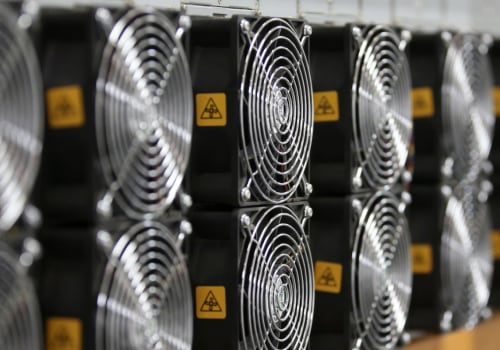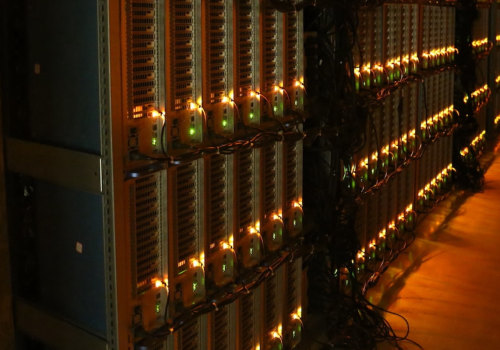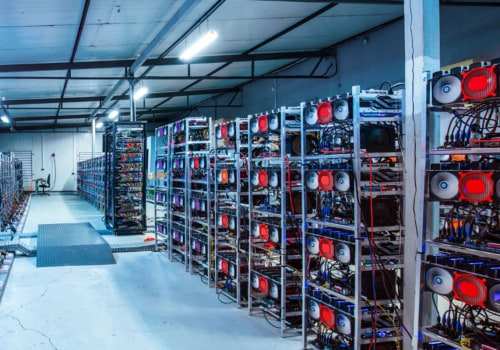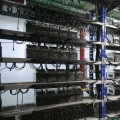Bitcoin mining can still make sense and be profitable for some people. In an effort to remain competitive, some machines have adapted. Gordon Scott has been an active investor and technical analyst in securities, futures, currencies and penny stocks for more than 20 years. He is a member of Investopedia's Financial Review Board and co-author of Investing to Win.
Gordon is a Chartered Market Technician (CMT). He is also a member of the CMT Association. While buying on an exchange like Coinbase is usually quite simple and allows you to buy fractions of cryptocurrencies, there are those who prefer to mine their coins. The best option probably depends on the individual circumstances.
Cryptocurrency mining seems obvious. Set up a computer to help you solve complex mathematical puzzles and you will be rewarded with a coin or a fraction of a coin. The first Bitcoin miners were able to earn coins relatively quickly, only with the computing power they had in their homes. Instead, some cryptocurrency miners opt for other currencies.
Some other cryptocurrencies are worth very little in the US. UU. Dollars, but it is possible to use what you mine and convert it into fractional bitcoins on an exchange, then expect bitcoin to gain in value. In addition to building your platform, you must also realize that you are going to use quite a lot of energy.
If you have high energy rates, you could end up spending quite a bit to mine coins, especially Bitcoin. The cost of electricity involved in mining a single bitcoin can be very expensive, even in the cheapest states. A less powerful platform that mines altcoins could save you money. Even so, it can take several weeks, or even months, to recover your original investment and be profitable.
Cloud mining involves buying time on someone else's platform. Companies like Genesis Mining and HashFlare charge you based on what is called the hash rate, basically, your processing power. If you buy a higher hash rate, you are expected to receive more coins for what you pay, but it will cost you more. Depending on the company you choose, you may pay a monthly fee or you can pay according to the hash rate.
Some companies also charge a maintenance fee. In general, cloud miners that allow you to access Bitcoin have higher rates. In some cases, you may be asked to sign a one-year contract, which encloses you. If the value of cryptocurrency falls, it could be trapped in an unprofitable contract.
As things stand, depending on what you mine, it may take several months before your cloud mining investment becomes profitable. However, at least with cloud mining, you don't have to worry about energy consumption costs and other direct costs related to doing all the mining with your own platform. It doesn't seem worth investing in expensive equipment and spending a lot of money on electricity every month. Buying bitcoins in the hope that its value will increase is equally risky.
The cryptocurrency market is young, and for every analyst who sees great potential, there is another who expects the market to go bankrupt. Bitcoin and other cryptocurrencies remain a high-risk, high-reward investment, with little consensus on the economic role they will play in the coming years. Building a crypto mining platform is similar to assembling a computer. For example, you will need to install basic computer hardware, such as a motherboard, ensure that the computer receives the proper power supply, and avoid overheating with a cooling system.
Perhaps the most important aspect of a crypto mining rig is the GPU card, which is a video card that essentially determines how powerful your mining rig will be. The difficulty of Bitcoin mining increases with the number of miners on the network to keep the supply of Bitcoin constant. If the difficulty did not increase with new miners, then bitcoins would be mined more often as more miners joined, and that increase in supply could reduce value. Bitcoin mining costs by state.
Luisanna Cocco and Michele Marchesi. Modeling and Simulating the Mining Economy in the Bitcoin Market. PLoS One. Network hash rates depend on the stability of a mining platform's connection to the server, the hash rate of other miners on the network, and also on the number of miners on the network.
The profitability is determined by the price of the machine per TH, the number of watts used by the machine per TH and the costs of hosting. The CryptoCompare site offers a useful calculator that allows you to connect numbers such as your hash rate and electricity costs to estimate costs and benefits. Even so, Bitcoin's high volatility can add uncertainty to the mining company, and you need to consider it carefully before deciding to jump on the cryptocurrency bandwagon. Bitcoin miners earn bitcoin by collecting something called a block reward plus the fees bitcoin users pay miners for securely recording their bitcoin transactions on the blockchain.
If you've made an effort to learn about mining and have found a location with low-cost electricity for your machines, you still need to consider where to store the bitcoin you mine. Mining benefits from scale, and domestic miners can generally make less profit per miner than a professional mining company. If small miners can re-enter the network, it greatly increases decentralization and further supports Satoshi Nakamoto's original intentions. Because many users around the world share these responsibilities, Bitcoin is a decentralized cryptocurrency, or one that doesn't rely on any central authority such as a central bank or government to oversee its regulation.
With such a small chance of finding the next block, it could be a long time before the miner finds a block, and the difficulty of climbing makes matters even worse. As the price of Bitcoin rises, new miners find it profitable to mine, even if their electricity costs were previously prohibitive. On top of that, serious miners have created huge matrices to mine, making it difficult for smaller miners to compete. .
.








